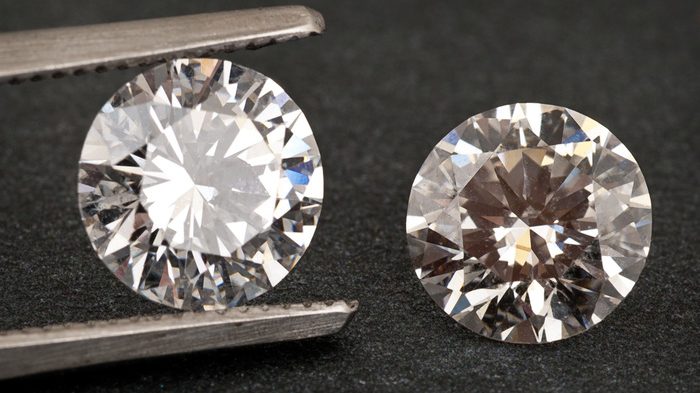1. What are Diamonds?
Diamonds are clear sorts of carbon, formed significant inside the World’s mantle under high strain and temperature conditions. They are esteemed for their hardness and ability to reflect light in an uncommon way.
2. Natural Diamonds
Natural diamonds are molded naturally more than huge number of years. They start as carbon particles significant inside the Earth, presented to ludicrous pressure and power that come to fruition them into diamonds. This cooperation, generally speaking 천연과 랩다이아의 차이, happens 100 miles or more under the World’s surface.
2.1 How Natural Diamonds Design
Natural diamonds structure through volcanic lines and kimberlite courses of action that bring them closer to the World’s surface. This trip can require an extensive stretch of time and incorporates unequivocal geological conditions.
2.2 Characteristics of Natural Diamonds
Natural diamonds are known for their one of a kind case and remarkable defects, regularly implied as contemplations. These imperfections add to their characteristic and are surveyed considering the 4Cs: cut, assortment, clearness, and carat weight.
3. Lab-Grown Diamonds
Lab-grown diamonds, of course, are mixed in controlled laboratory conditions using either High Strain High Temperature (HPHT) or Substance Smoke Declaration (CVD) procedures. These methods imitate the natural diamond-creating cycle anyway in much more restricted stretch of time.
3.1 How Lab-Grown Diamonds are Made
Lab-grown diamonds are made copying the conditions tracked down On the planet’s mantle yet shockingly quick or months as opposed to an extensive stretch of time. HPHT and CVD are the two fundamental systems used, each offering indisputable advantages concerning efficiency and quality control.
3.2 Characteristics of Lab-Grown Diamonds
Lab-grown diamonds have comparable physical and engineered properties as natural diamonds. They show unclear magnificence, hardness (assessed on the Mohs scale), and optical traits, making them indistinct to the independent eye from natural diamonds.
4. Differences Between Natural and Lab-Grown Diamonds
Understanding the abberations between natural and lab-grown diamonds incorporates considering their compound piece, genuine properties, and ecological impact.
4.1 Substance Construction
The two kinds of diamonds are made from pure carbon particles coordinated in a clear plan. The key difference lies in the start of carbon particles — natural diamonds get from carbon found significant inside the Earth, however lab-grown diamonds use carbon from a controlled laboratory environment.
4.2 Genuine Properties
Natural and lab-grown diamonds share all things considered, undefined genuine properties. They are comparatively hard, situating 10 on the Mohs size of hardness, and show a comparative refractive record, scattering, and fluorescence under UV light.
Man made diamonds, also known as synthetic or cultured diamonds, are created in laboratories using advanced technological methods that mimic the natural processes forming diamonds deep within the Earth’s mantle. These diamonds are produced through two primary techniques: High Pressure High Temperature (HPHT) and Chemical Vapor Deposition (CVD). HPHT replicates the extreme conditions of natural diamond formation, while CVD grows diamonds from a gas mixture.
4.3 Natural Impact
Lab-grown diamonds are habitually advanced as a more legitimate and moral choice stood out from natural diamonds. They require less energy to convey and do exclude mining, which can have basic ecological and social consequences.
5. Cost and Worth
The assessing of diamonds, whether natural or lab-grown, is influenced various variables, for instance, market demand, creation costs, and customer wisdom.
5.1 Worth Differences
Lab-grown diamonds typically cost not precisely natural diamonds of identical size and quality. This cost differential mirrors the capabilities in progress strategies and market supply components.
5.2 Hypothesis and Resale Worth
While natural diamonds for the most part hold their value after some time due to their exceptional case and social significance, lab-grown diamonds are modestly new to the market. Their resale worth may not match that of natural diamonds, but instead this example could progress as client tendencies change.
6. Reputation and Knowledge
Buyer tendencies and the jewelry business’ situation on natural versus lab-grown diamonds expect a significant part in embellishment market designs.
6.1 Market Demand
The demand for lab-grown diamonds is growing, particularly among additional young clients who center around sensibility and moral getting. Regardless, natural diamonds continue to hold a tremendous part of the market due to their spread out appeal and status.
6.2 Acumen in Jewelry Industry
The jewelry business recognizes the two sorts of diamonds, for specific retailers work in lab-grown diamonds to deal with propelling purchaser tendencies. The perspective on lab-grown diamonds as a plausible choice rather than naturals continues to foster inside the business.
7. Certifications and Assessing
Certifications and assessing standards ensure straightforwardness and quality affirmation for both natural and lab-grown diamonds.
7.1 Declaration Bodies
Spread out affiliations like the Gemological Foundation of America (GIA) and the Overall Gemological Establishment (IGI) give affirmations that really take a look at the believability and nature of diamonds, regardless of what their beginning stage.
7.2 Looking into Scales
Diamonds are checked on considering the 4Cs — cut, assortment, clearness, and carat weight. These standardized models apply in much the same way to natural and lab-grown diamonds, empowering buyers to go with educated decisions in light regarding genuine evaluations.
8. Conclusion
In conclusion, the differences between natural and lab-grown diamonds wrap their beginning stage, creation procedures, genuine properties, ecological impact, and market components. Whether picking a diamond for its delegate worth, adventure potential, or moral examinations, understanding these capabilities draws in customers to seek after choices agreed with their tendencies and values. As development advances and customer care creates, the conversation enveloping natural versus lab-grown diamonds continues to shape the destiny of the diamond business.




